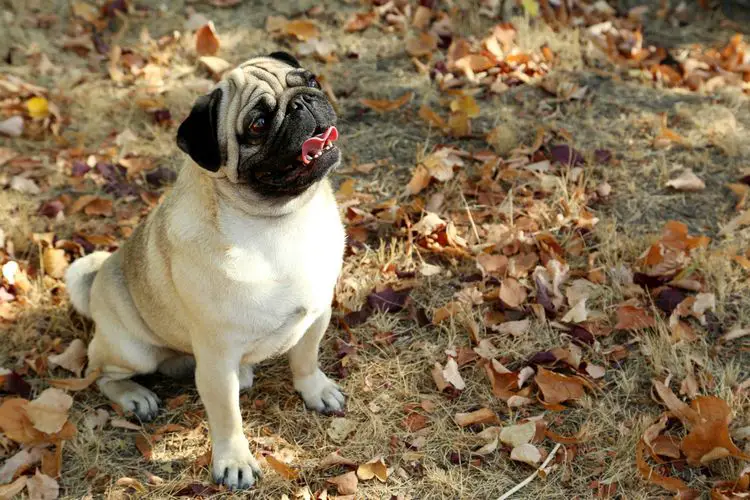How Long Can a Dog Live with Tracheal Collapse – Collapsing Trachea When to Say Goodbye
When you have a terminally ill dog that is dealing with a tracheal collapse, you will go through some difficulty as there are no manuals on dealing with a tracheal collapse. Also, you will need a lot of patience as you watch your dog’s health decline very slowly.
When dealing with a tracheal collapse, it will be impossible for your dog to make very simple jumps as it could feel some discomfort when it makes very little movements. Also, you might have to deal with hearing the hacking sounds of your dog’s breathing.
When is the Ideal Time to Put Your Dog Down?
When looking to euthanize a dog with a collapsed trachea, you will need to use euthanasia only when it is the last alternative. It is not out of place for dogs to deal with a collapsed trachea. Also, once your dog starts dealing with a collapsed trachea, euthanasia does not have to follow.
Before finally deciding on euthanasia, you will need to see a vet. Your vet will take you through a process that will come in handy in managing or improving your dog’s case. When this is done, your dog can still have a life of decent quality for a long while.
Some dogs do quite well after being diagnosed with a collapsed trachea. Others, however, are only able to live a few years under intense care. Still, some will only be able to live a few months. However, as soon as your dog starts struggling badly when breathing, euthanasia should be considered.
This process is quite simple. When you decide to euthanize a dog with tracheal collapses, the vet gives it an injection which makes it breathe faster. This is followed by its body becoming still.
How Long Can Dogs Survive with Tracheal Collapse
When a dog with a collapsing tracheal is being treated, it can live for at least two years. This implies that you should expect your dog to live with a collapsed trachea for about two years if it is given the right treatment. While averagely, dogs with tracheal collapse can survive for two years, some dogs will live up to four years. And even longer.
While your dog can keep living after its trachea collapses, you have an active role in keeping it alive and helping it live a quality life. Some of the things you need to do to help your dog live a life of good quality is keeping it away from the excitement and heavy activities when the weather is hot. This is because hot days can make them struggle while breathing.
What Happens When a Dog’s Trachea Collapses?
Tracheal collapse in dogs is a condition that takes place over time. It involves the collapse of rigid structures in the trachea. These structures collapse when they lose strength. Dogs going through this process are known to make sounds that make it seem like they want to push out a hairball through their throat.
This ailment occurs in various stages. When it is at its first stage, the membranes positioned at the trachea’s top begin falling inwards. When this happens, your dog’s airway gets blocked. At this point, the condition should be treated. If it is left untreated, the trachea’s C-shaped rings start flattening. The trachea’s flattening leads to extra blockage of the pet’s airways and makes it cough constantly.
Sometimes the cases are milder. In milder situations, trachea’s collapse can lead to a tickle in the throat, which eventually leads to coughing. This is more pronounced when the dog gets excited, as well as when its throat gets compressed with a collar.
Although dogs cough, this cough is unlike a regular dog cough. It sounds like a reverse sneeze. It, however, is not a sneeze as it persists for a long time. There are times this cough is honking and can be scary. When dogs that are overweight g through this condition, they lose weight, which can help them put in less effort into respiration. Also, it makes the collapsed trachea less severe.
This coughing takes place as a result of trauma and inflammation. If the coughing cycle is left unbroken, there could be a temporary obstruction of the airway. This usually leads to respiratory difficulty, and in severe conditions, it causes death.
What Causes Tracheal Collapse
The reasons why tracheal collapses in dogs are not known. However, it is believed that tracheas collapse because of the presence of weak cartilage in the tracheal rings. Also, chronic respiratory disease, heart disease, and Cushing’s disease can cause tracheal collapse.
The tracheal collapse comes with various symptoms. Some of them are blushing tinge in the gums, retching, unusual breathing sounds, and honking cough. If you own a dog, then you will need to give it a lot of attention as dogs have a reputation for hiding their discomfort and pain.
When your dog begins making sounds during breathing, you might consider the sound a cough that will get cured on its own and go away. The case, however, might be different.
Treatments
Do you think your dog’s trachea has collapsed or is still collapsing? If yes, the first thing you need to do is see a vet. When this happens, the amount of damage can be assessed easily. Once it is assessed, the ideal treatment can be administered.
It is normal to treat issues of tracheal collapse with antibiotics, corticosteroids, bronchodilators, and cough suppressants. If this collapse occurs as a result of your dog being overweight, you will need to alter your dog’s diet. Additionally, a lot of walks should be added to its routine.
It is good to walk your dog. However, walking your dog is not all that you will need to do. It would help if you walked your dog with a harness and not a collar. This is because you just might be obstructing the airway each time you apply pressure with a collar. This process usually worsens your dog’s ailment.
If the humidity in the environment is low, humidification might be needed. Also, air filtration becomes important in areas with high pollen count.
In very severe cases of tracheal collapse, surgery might be the best alternative. There are different surgery alternatives. However, the most commonly used is prosthetic polypropylene rings. These are attached to the external part of the trachea. Although this surgery is complicated, its success rate is high.
Additionally, there is a type of surgical intervention that is known as stenting. This procedure involves putting a hard structure in the windpipe. This keeps the windpipe open. Also, the process has to be carried out by a specialist.
How to Help a Dog with Collapsed Trachea
Dogs are known to tuck their tails when they do not feel well. Also, they whine more than they would normally. To help your dog cope well with the symptoms associated with tracheal collapse, get your space decluttered and make your home airy. With purifiers and filters, you can deal with environmental pollutants.
If you have a dog suffering from tracheal collapse, ensure it is not exposed to perfumes, cigarette smoke, or airway irritants on clothing, on rugs, or in person. If the tracheal collapse is suspected to be caused by obesity, a change in diet has to be incorporated. Also, exercises are essential.
Conclusion
To the average person, pets are a part of the family. In the same way, family members get sick, your dog can also be sick, and this could lead to death.
While no one hopes to deal with euthanasia, it is part of raising a dog and could happen to any dog.





